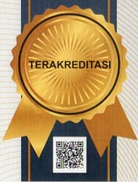Program Kesiapsiagaan Tsunami Usaha Hotel di Kawasan Pariwisata Anyer, Provinsi Banten
Abstract
Keywords
Full Text:
PDFReferences
AlBattat, A R, & MatSom, A. P. (2019). Disaster {Planning} and {Preparedness} in the {Hotel} {Industry}. Emerald.
AlBattat, Ahmad Rasmi, & Mat Som, A. P. (2013). Emergency Preparedness for Disasters and Crises in the Hotel Industry. SAGE Open, 3(3), 215824401350560. https://doi.org/10.1177/2158244013505604
Aprilia, K., & Stiv, Y. (2018). Gempa dan Tsunami di Palu. Jurnal EDimensi Arsitektur, 7(1), 1033–1040. Retrieved from https://www.benarnews.org/indonesian/slide-show/gempa-tsunami-palu-10012018122700.html%0A
Becken, S., & Hughey, K. F. D. (2013). Linking tourism into emergency management structures to enhance disaster risk reduction. Tourism Management, 36, 77–85. https://doi.org/10.1016/j.tourman.2012.11.006
BNPB. (2013). Indeks Risiko Bencana Indonesia. Direktorat Pengurangan Risiko Bencana, Deputi Bidang Pencegahan dan Kesiapsiagaan.
Brown, N. A., Rovins, J. E., Feldmann-Jensen, S., Orchiston, C., & Johnston, D. (2017). Exploring disaster resilience within the hotel sector: A systematic review of literature. International Journal of Disaster Risk Reduction, 22, 362–370. https://doi.org/10.1016/j.ijdrr.2017.02.005
Daswati, D., Samad, M. A., & Wekke, I. S. (2019). Collaborative Governance Dalam Pengelolaan Integrated Community Shelter Pasca Bencana di Kota Palu. https://doi.org/10.31227/osf.io/7kjte
Enz, C. A., & Taylor, M. S. (2002). The safety and security of U.S. hotels: A post-September-11 report. Cornell Hotel and Restaurant Administration Quarterly, 43(5), 119–136. https://doi.org/10.1016/S0010-8804(02)80062-3
Faulkner, B. (2001). Towards a framework for tourism disaster management. Tourism Management, 22(2), 135–147. https://doi.org/10.1016/S0261-5177(00)00048-0
Faulkner, B., & Vikulov, S. (2001). Katherine, washed out one day, back on track the next: A post-mortem of a tourism disaster. Tourism Management, 22(4), 331–344. https://doi.org/10.1016/S0261-5177(00)00069-8
IOC, & UNESCO. (2012). A Guide to Tsunamis for Hotels. Retrieved from http://neamtic.ioc-unesco.org
Maryanti, S., Netrawati, I. O., & Faezal, F. (2019). Menggerakan Perekonomian Melalui Pemulihan Usaha dan Industri Mikro Kecil Menengah Pasca Bencana Gempa Bumi di Nusa Tenggara Barat. Media Bina Ilmiah, 14(4), 2321–2336.
Reisinger, Y., & Mavondo, F. (2005). Travel Anxiety and Intentions to Travel Internationally: Implications of Travel Risk Perception. Journal of Travel Research, 43(3), 212–225. https://doi.org/10.1177/0047287504272017
Ritchie, B. W., Bentley, G., Koruth, T., & Wang, J. (2011). Proactive crisis planning: Lessons for the accommodation industry. Scandinavian Journal of Hospitality and Tourism, 11(3), 367–386. https://doi.org/10.1080/15022250.2011.600591
Shalih, O. (2019). Membangun Ketahanan (Resiliensi) Bencana Pada Kawasan Pariwisata (Studi Kasus: Kabupaten Pandeglang Pasca Tsunami Selat Sunda 2018). https://doi.org/10.31227/osf.io/v3yxs
UNISDR. (2009). 2009 UNISDR Terminologi on Disaster Risk Reduction. In International Stratergy for Disaster Reduction (ISDR). https://doi.org/978-600-6937-11-3
Wahyuningtyas, N., Tanjung, A., Kodir, A., & Wijanarko, H. (2020). Management of Tourism Areas Based on Disaster Mitigation (Case Study of Senggigi Beach). IOP Conference Series: Earth and Environmental Science, 412(1), 12015. https://doi.org/10.1088/1755-1315/412/1/012015
Wulung, S R P, Abdullah, C. U., & Ervina, E. (2019). Post-Disaster Management in Tourism Destination: A Case of Tanjung Lesung, Indonesia. Proceedings The 2019 International Conference on Culture, Technology, and Tourism (CTT), 1, 14. Retrieved from http://journal.prasetiyamulya.ac.id/journal/index.php/Proceedings/article/view/344
Wulung, Shandra Rama Panji, & Abdullah, C. U. (2020). Upaya Mitigasi Pasca Tsunami di Destinasi Pariwisata. Media Bina Ilmiah, 14(7), 2883–2894. Retrieved from http://ejurnal.binawakya.or.id/index.php/MBI/article/view/461
DOI: https://doi.org/10.32487/jshp.v5i2.1075
Refbacks
- There are currently no refbacks.

This work is licensed under a Creative Commons Attribution-ShareAlike 4.0 International License.
 JSHP: Jurnal Sosial Humaniora dan Pendidikan is licensed under a Creative Commons Attribution-NonCommercial 4.0 International License
JSHP: Jurnal Sosial Humaniora dan Pendidikan is licensed under a Creative Commons Attribution-NonCommercial 4.0 International License




